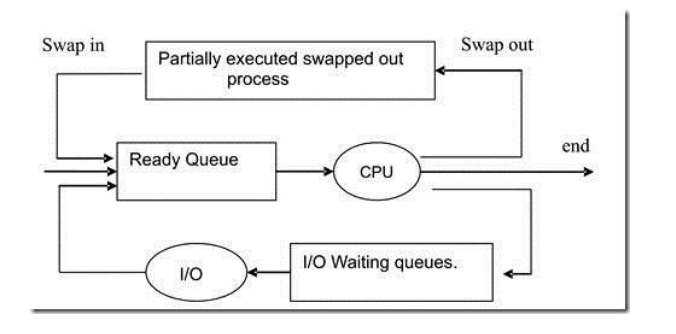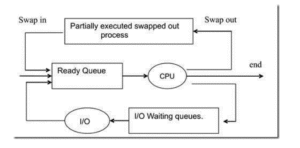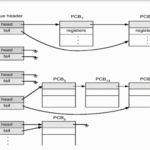Schedulers

A process migrates between the various scheduling queues throughout its life-time purposes. The OS must select for scheduling processes from these queues in some fashion. This selection process is carried out by the appropriate scheduler. In a batch system, more processes are submittedand then executed immediately. So these processes are spooled to a mass storage device like disk, where they are kept for later execution
Types of schedulers:
There are 3 types of schedulers mainly used
1. Long term scheduler: Long term scheduler selects process from the disk & loads them into memory for execution. It controls the degreeof multi-programming i.e. no. of processes in memory. It executes less frequently than other schedulers. If the degree of multiprogramming is stable than the average rate of process creation is equal to the average departure rate of processes leaving the system. So, the long term scheduler is needed to be invoked only when a process leaves the system. Due to longer intervals between executions it can afford to take more time to decide which process should be selected for execution. Most processes in the CPU are either I/O bound or CPU bound. An I/O bound process (an interactive ‗C‘ program is one that spends most of its time in I/O operation than it spends in doing I/O operation. A CPU bound process is one that spends more of its time in doing computations than I/O operations (complex sorting program). It is important that the long term scheduler should select a good mix of I/O bound & CPU bound processes.
2. Short – term scheduler: The short term scheduler selects among the process that are ready to execute & allocates the CPU to one of them. The primary distinction between these two schedulers is the frequency of their execution. The short-term scheduler must select a new process for the CPU quite frequently. It must execute at least one in 100ms. Due to the short duration of time between executions, it must be very fast.
3. Medium – term scheduler: some operating systems introduce an additional intermediate level of scheduling known as medium – term scheduler. The main idea behind this scheduler is that sometimes it is advantageous to remove processes from memory & thus reduce the degree of multiprogramming. At some later time, the process can be reintroduced into memory & its execution can be continued from where it had left off. This is called as swapping. The process is swapped out & swapped in later by medium term scheduler. Swapping is necessary to improve theprocess miss or due to some change in memory requirements, the available memory limit is exceeded which requires some memory to be
freed up






